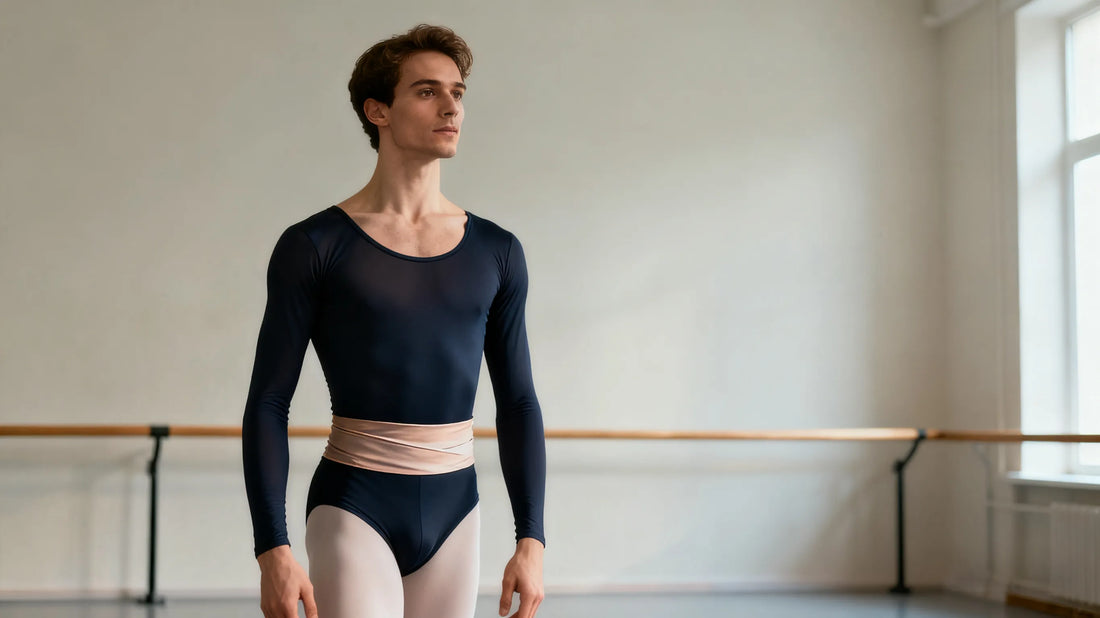
What Is a Dance Belt? The Essential Guide for Every Dancer
Share
Introduction: More Than Just a Belt
If you’ve ever watched a ballet performance or taken a dance class, you may have wondered how male dancers maintain such clean, smooth lines under their costumes. The secret isn’t in the outfit — it’s in the dance belt.
A dance belt is a specialized undergarment designed to provide support, comfort, and a seamless look during dance performances. In this guide, we’ll explain what a dance belt is, what it does, how to wear it properly, and how it differs from regular belts or underwear.
For more technical details, see Wikipedia – Dance Belt
What Exactly Is a Dance Belt?
A dance belt is not a traditional belt at all — it’s a form-fitting garment designed primarily for male dancers. Made from stretchy materials such as spandex or nylon, it provides support for the groin area while eliminating visible lines under tights or performance outfits.
There are two common styles:
Thong back — the most popular style among professional dancers because it minimizes visible lines.
Full back — preferred by beginners or those who want extra comfort during long rehearsals.
What Does a Dance Belt Do?
The dance belt serves three main purposes:
1️⃣ Support – It acts like an athletic supporter, reducing discomfort and movement during vigorous routines.
2️⃣ Protection – It helps prevent injuries from repetitive motion or friction.
3️⃣ Appearance – It ensures a clean silhouette under tight-fitting dancewear.
While its function is practical, many professional dancers describe the dance belt as “part of their uniform,” just as essential as ballet shoes or tights.
Types of Dance Belts

Not all dance belts are created equal. Here are the most common types you’ll find:
Cotton Blend Dance Belts: Breathable and suitable for daily classes.
Spandex Dance Belts: Offer maximum flexibility for performance.
Padded Dance Belts: Provide extra protection and shape for stage lighting.
Looking for belts that combine comfort and aesthetics? Our Dress Belts Collection offers refined options for every occasion.
How to Wear a Dance Belt Correctly
Wearing a dance belt for the first time can feel unusual, but the right fit makes all the difference.
Step 1: Put it on like regular underwear, ensuring the waistband sits firmly around your waist.
Step 2: Adjust the pouch to provide full support — it should feel snug, not tight.
Step 3: Pull the thong or strap into place and check for smooth lines under your tights.
Dance Belt vs. Regular Belt — Are They the Same?

Despite the name, a dance belt has nothing in common with your everyday fashion belt.
| Feature | Dance Belt | Regular Belt |
|---|---|---|
| Purpose | Supportive undergarment | Holds pants up |
| Material | Stretch fabric (spandex/nylon) | Leather, canvas, or fabric |
| Design | Minimal seams, thong or full back | Buckle and strap |
| Used by | Male dancers | Everyone |
For stylish belts that complement jeans or suits, you can visit our Casual Belts or Leather Belts sections — those are made for fashion, not performance.
Do You Really Need a Dance Belt?
If you’re a male dancer — yes, absolutely. The dance belt is not optional equipment; it’s required for both comfort and professionalism. Even during rehearsals, skipping it can cause discomfort or visible outlines that distract from the performance.
Female dancers don’t wear dance belts, but they do rely on similar support garments designed for their costumes.
How to Choose the Right Dance Belt
When buying your first dance belt, keep these points in mind:
Choose size based on waist measurement, not pant size.
Look for breathable fabric if you dance daily.
Opt for a neutral color that matches your tights.
Replace your dance belt every 6–12 months depending on use.
Common Questions About Dance Belts (FAQ)
Q: Are dance belts only for ballet?
A: No. Male dancers in jazz, contemporary, and even acrobatics use them for protection and uniform appearance.
Q: Are dance belts uncomfortable?
A: A properly fitted one should feel secure, not painful. Most discomfort comes from the wrong size or material.
Q: Can you wash a dance belt?
A: Yes — always hand wash and air dry to maintain elasticity.
Conclusion: A Small Detail That Makes a Big Difference
A dance belt may not be visible to the audience, but it plays a vital role in a dancer’s confidence and performance. Knowing what a dance belt is and how to wear one correctly ensures not only professionalism but also comfort on stage.
👇 Want to explore more types of belts that combine function and fashion?
Visit our Belts Collection for classic, casual, and performance-ready designs.
